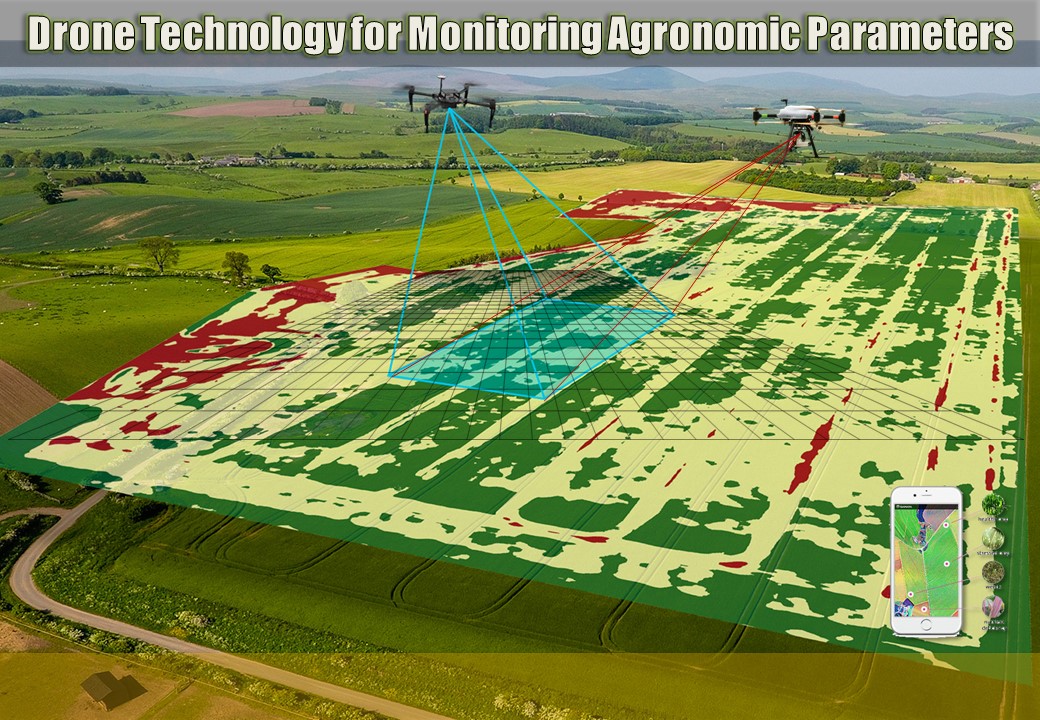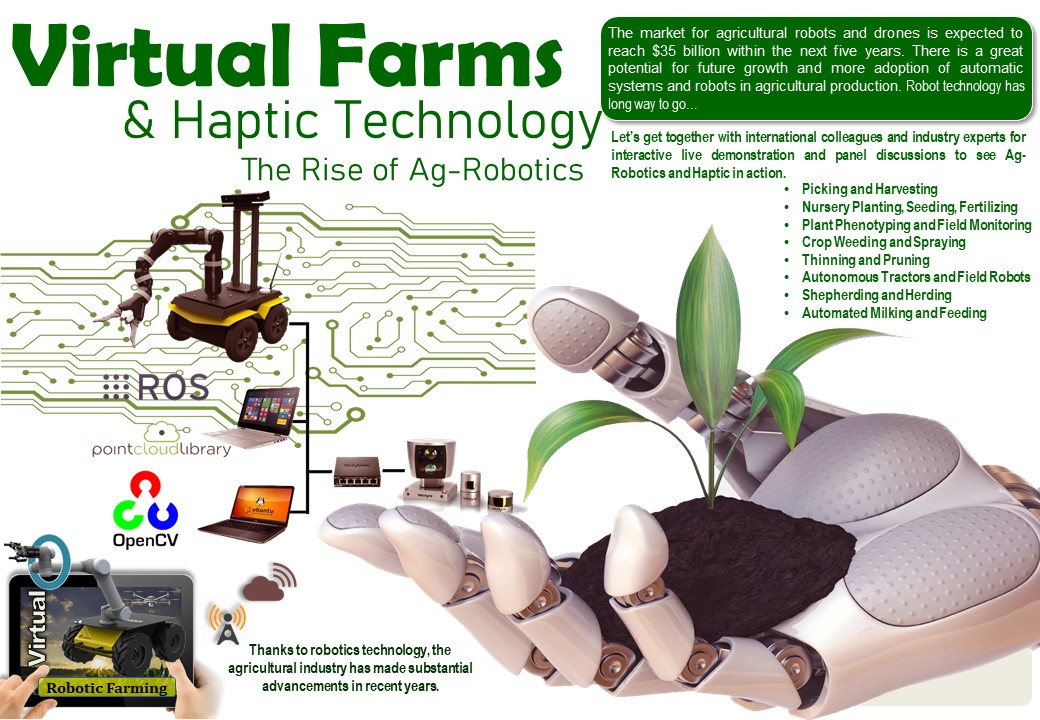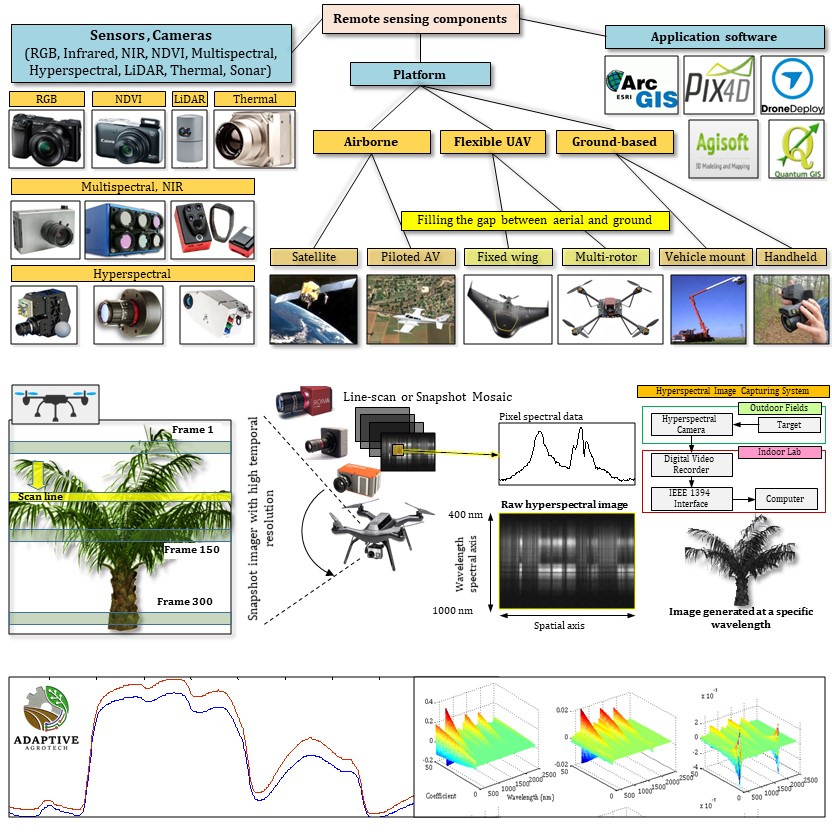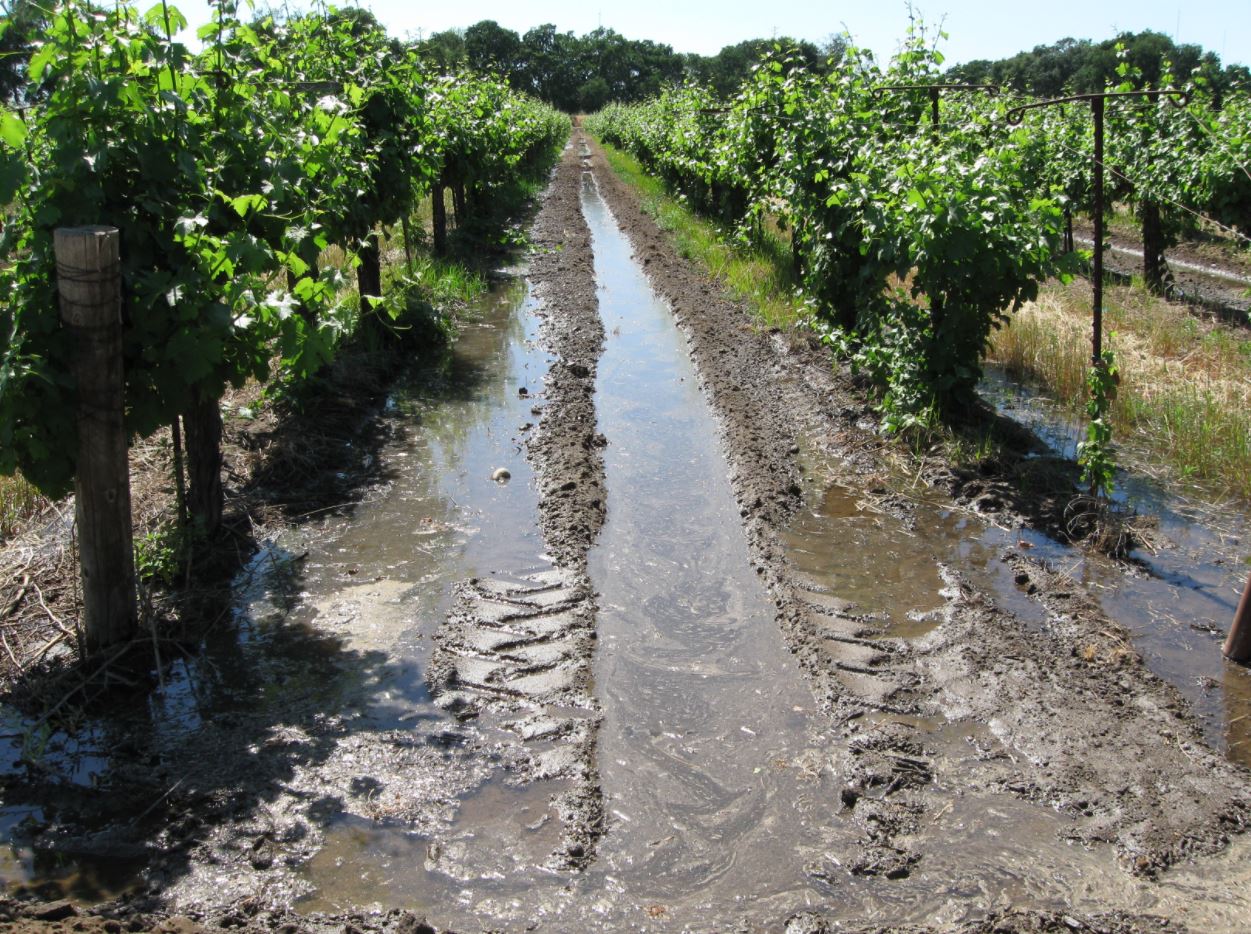Adaptive AgroTech members have provided consultancy on the following topics.
UAV/Drones
Unmanned aerial vehicles carrying multimodal sensors for precision agriculture (PA) applications face adaptation challenges to satisfy reliability, accuracy, and timeliness. Unlike ground platforms, UAV/drones are subjected to additional considerations such as payload, flight time, stabilization, autonomous missions, and external disturbances. For instance, in oil palm plantations (OPP), accruing high resolution images to generate multidimensional maps necessitates lower altitude mission flights with greater stability. We provide consultation to addresses various UAV-based smart farming and PA solutions for farms and plantations including health assessment and disease detection, pest monitoring, yield estimation, creation of virtual plantations, and dynamic Web-mapping.


Ag-Robotics
Agricultural robotic is playing a crucial role in Digital farming by employing modern technologies for shifting from tedious operations to continuously automated processes. The concepts of multi-robots, human-robot collaboration, and environment reconstruction from aerial images and ground-based sensors for the creation of virtual farms are considered as some of the gateways of digital farming. We provide consultation on the latest achievements in agricultural robotics, specifically those that are used for autonomous weed control, field scouting, and harvesting.
Precision Agriculture, Early Disease Detection
In many countries, precision agriculture solutions are transforming field production by allowing farmers to better target inputs and management decisions to local conditions. Several technological practices have created new opportunities to provide customized information to farmers; however most of these innovations are beyond the reach of local farmers. Adaptive AgroTech Consultancy Int support farmers with recommendations on the three main steps involved in PA that is sensing, analyzing, and acting. Through documented guidelines, we provide consultation on the use of mobile soil sensors and soil analysis labs with spectroscopy, ground based, satellite and drone imaging devices for data collection, prediction models that generate real-time estimation of yield, and information processing and data interpretation. Using two-way communication and information aggregation, we offer farmers useful information customized by geography, market, and farmer characteristics. As farmers realize the benefits of this service, they have incentives to contribute accurate information into the system that will improve our recommendations over time. We incorporate insights from behavioral economics and social learning theory and make use of “Adaptive Analysis” for scenario testing and machine learning techniques for identifying what types of information and delivery mechanisms work best for farmers.


Greenhouse Technology
High operational costs of greenhouse production in different climate conditions due to the initial investments in structure, equipment, and energy necessitate practicing advanced techniques for more efficient use of available resources. Our consultancy covers system design and concept development for greenhouse automation and control, from an adaptive management framework for yield prediction to evaluating and adjusting optimality degrees and comfort ratios of microclimate parameters. We provide a systematic approach for automatic data collection and processing with the objective to produce knowledge-based information in achieving optimum microclimate for high-quality and high yield. Our framework contributes to providing the best management decisions such as site selection, optimum growing season, scheduling efficiencies, energy management with different climate control systems, and risk assessments associated with each task.
Renewable Energy
The relationship between the global destructive environmental impacts and sustainable development has become a primary concern in the past decades. Renewable energy sources (RES) are environmentally friendly, locally, and freely available, and their utilization offers an alternative way to decrease the dependence on fossil fuels. Companies and nations responsible for greenhouse gas emissions are thus acquiring significant potential liabilities. Adaptive AgroTech has close links with research groups that are active in renewable energy technologies (RETs), potentially offering emitters reduced responsibility for climate change. The RETs offer the promise of clean, abundant energy gathered from self-renewing resources. Nowadays, the technologies based on the RES such as wind, solar, biomass, and geothermal have become more cost-effective in an increasing number of markets, and are making significant steps to broader commercialization.


Farm Machinery
Mechanical power was adopted for farm use in the late 1800’s and is a vital element in today’s modern agriculture. As the primary source of power in field, farm machinery should be used to the best possible advantage. Two parameters play an important role in effective field machine capacity. First, machine management which refers to the mechanical condition of the machine and indicate where, when and how the machine is used on field. Second, physical condition of the field which includes field size and shape, topography, terrace layout, row length and arrangement, row-end turning space and field surface. Another issue that is important in any farm operation and may affect farm machinery is timeliness. Since a particular machine has a fixed theoretical field capacity, Adaptive AgroTech can support farmers with operational analysis of farm machinery ( an approach to increase machine capacity and obtain efficient machine utilization) and provide recommendations on the use of new technology such as GPS, autonomous navigation, wireless communication for real-time data monitoring, as well as custom-built software for data processing to increase machine productivity not in terms of acres per hour, but by utilizing machine and operator’s time more effectively.
Urban Agriculture
The advances and improvements in controlled environment agriculture (CEA) have promoted the scientific solutions for the efficient production of plants in populated cities and multi-story buildings. Successful deployment of CEA for urban farming requires many components and subsystems, as well as the understanding of the external influencing factors that should be systematically considered and integrated. Adaptive AgroTech members who are active in Urban Agriculture attempt to highlight some of the most recent advances in greenhouse technology and CEA in order to raise the awareness for technology transfer and adaptation, which is necessary for a successful transition to urban farming. Adaptive AgroTech provide consultation on several aspects of a high-tech CEA system including improvements in the frame and covering materials, environment perception and data sharing, and advanced microclimate control and energy optimization models. We provide a systematic approach to highlighted urban agriculture and its derivatives, including vertical farming, rooftop greenhouses and plant factories which are the extensions of CEA and have emerged as a response to the growing population, environmental degradation, and urbanization that are threatening food security. We also recommend several opportunities and challenges that have been identified in implementing the integrated CEA and vertical farming for urban agriculture.


Our consultancy team in irrigation and soil has extensive field experience in the use of different soil sensors such as the VerisEC sensor for mapping apparent soil electrical conductivity (ECa) in order to identify areas of contrasting soil properties. An important step in these management decisions is to understand the relationship, on a spatial basis, of crop yields to the myriad of agronomic factors which may potentially be causing yield variations. Adaptive AgroTech member, Dr. Aimrun Wayayok, an expert in irrigation and soil, has provided consultatancy support on the following topics: assimilation of remotely sensed and in-situ measurements to improve hydroecological models, assimilation of remote sensing and in-situ data into crop models for estimation of yield and soil carbon, determination of ‘best management practice’ effectiveness, evaluation of alternative sources of water supply, evaluation of soil-water-air-plant relationships, evaluation of water use and soil carbon sequestration under ridge tillage in mali, integration of hydrologic/water quality models with GIS, integration of remote sensing models with crop and hydrologic models, integration of satellite data, water resources management, linking crop growth and water quality models, microwave remote sensing for soil moisture estimation, modeling the dynamics of crop water and nutrient use, stress development and yield, optimization of agricultural watershed management systems, optimization of irrigation management strategies under climate change, remote sensing for weed and invasive species detection in wetlands, simulation of water quality using hydrologic models, stochastic modeling of hydrologic processes, systems design for microirrigation, and waste treatment by crop irrigation and overland flow.



